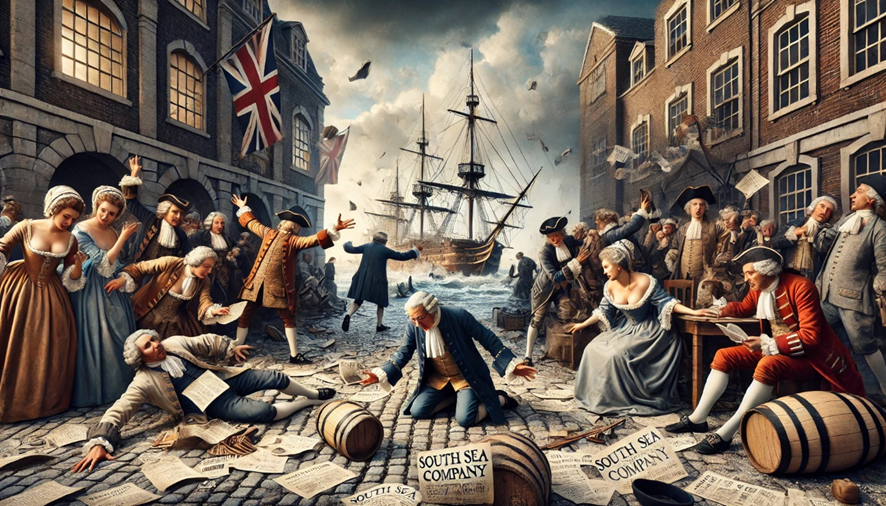The south Sea Bubble
A Financial Collapse That Shook England
The South Sea Bubble was an economic crisis that left a profound mark on 18th-century England. In 1720, a wave of speculation surrounding shares of the South Sea Company drove thousands of investors to ruin, highlighting how greed and a lack of regulation can inflate financial bubbles with devastating consequences.
Context: Trade and Debt
The South Sea Company was established in 1711, promising to exploit trade opportunities in South America. In theory, the company would secure exclusive rights to trade with Spanish colonies following a treaty between England and Spain. However, these trade expectations were largely illusory due to tensions between the two nations. The company's true strategy was financial: it aimed to assume a significant portion of Britain’s national debt in exchange for lucrative government concessions.
At a time when England was seeking innovative ways to manage its growing debt, this operation attracted investors hopeful for massive returns. The South Sea Company promised generous dividends based on future revenues that never materialized. This sparked a speculative frenzy involving aristocrats, emerging middle classes, and small savers alike.
The Speculative Frenzy
In early 1720, the South Sea Company began issuing shares at progressively higher prices. Demand for these shares skyrocketed, fueled by aggressive advertising campaigns and carefully managed rumors exaggerating the company’s commercial prospects. The speculative boom drew investors from all walks of life, from nobles to merchants.
The Climax and Collapse
By mid-1720, the South Sea Company's share prices reached their peak. However, growing doubts about the company’s viability and the lack of real revenue began to spread. Savvy investors started selling their shares, triggering a price drop.
Panic set in as it became clear the company could not fulfill its promises. Within weeks, share prices plummeted, wiping out the savings of thousands. Many families, having mortgaged properties or sold assets to invest, were left destitute.
Factors That Aggravated the Crisis
The South Sea Bubble was not only the result of investor greed but also widespread corruption and negligence. Influential government figures, including Prime Minister Robert Walpole, and high-ranking company officials manipulated information to inflate share prices and personally benefit.
Additionally, the British financial system lacked sufficient regulation to prevent or mitigate such a phenomenon. The uncontrolled issuance of shares and the opacity of the South Sea Company’s operations facilitated the collapse. Even Isaac Newton, the renowned scientist, lost a fortune investing in the company, later remarking, “I can calculate the motion of heavenly bodies, but not the madness of men.”
Consequences of the Collapse
The bubble’s burst had devastating effects on Britain’s economy and public trust in financial markets. Thousands were ruined, and the scandal exposed corruption among politicians and businessmen. This sparked a debate on the need for market regulation and investor protection.
Despite the crisis, England recovered relatively quickly. The government intervened to rescue the most affected banks and prevent a total financial meltdown. Measures were also taken to restore confidence in the system, laying the groundwork for future financial reforms.
Lessons from the South Sea Bubble
The South Sea Bubble is a cautionary tale of how unchecked expectations, irrational speculation, and insufficient regulation can inflate financial bubbles. It also underscores the importance of transparency and integrity in financial markets.
Although this episode occurred over 300 years ago, its relevance endures. Modern financial crises, such as the dot-com bubble of 2000 or the 2008 financial crash, share similar patterns of overconfidence and unbridled speculation.

